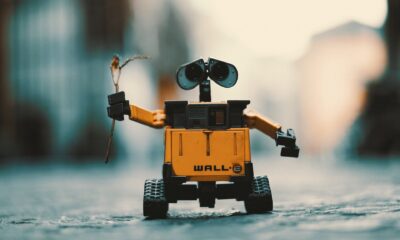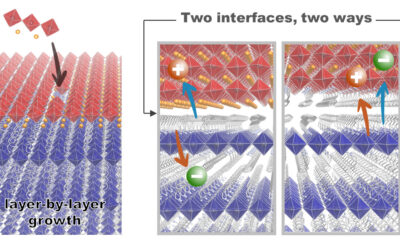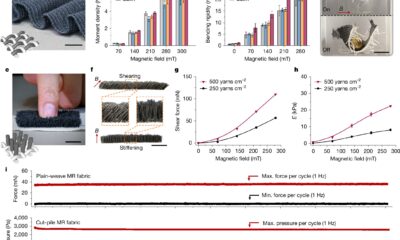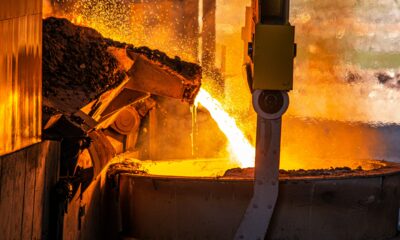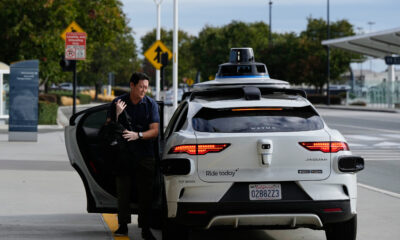Tech
How Pacific nations plan to go from spending up to 25% of GDP on fossil fuels to running on 100% renewables

Picture dusk falling somewhere in the Solomon Islands. A fisher’s skiff glides home using a whisper-quiet electric outboard motor. In the Cook Islands, a big battery steadies the island grid. In Papua New Guinea’s highlands, solar kits bring electric light to homes for the first time.
These aren’t prototypes—they’re already up and running across the Pacific. Put together, these stories of quiet change point to something bigger.
For decades, Pacific island countries have led the global fight on climate change. These nations are highly exposed to the damage from rising sea levels, acidifying oceans and bleached coral reefs. Pacific leaders helped secure the 2015 Paris Agreement and the global goal of holding warming to 1.5°C.
Now the Pacific is leading the way again. Island leaders have a bold plan to become the world’s first region powered entirely by renewables and energy storage.
The move isn’t symbolic. It’s extremely practical. Pacific nations spend an eye-watering percentage of their GDP (10%–25%) buying fossil fuels to run power plants, generators and vehicles. Ending reliance on imports and becoming energy independent will bring major dividends. Despite widespread support, the Pacific’s clean energy transition has not yet taken off in earnest due to transport costs and gaps in financing, skills and regulation.
Leaders will formally release a renewable roadmap next week at the COP30 climate conference in Brazil. Pacific nations and Australia are bidding to host the next climate talks in 2026. Island leaders hope to leverage the global summit to attract investment in their own energy transition.
Slashing fossil fuel imports will save billions
Right now, Pacific countries spend A$9–$14 billion a year importing diesel for generators and fuel for vehicles and boats.
Sharp falls in renewable costs mean solar and battery systems are now clearly cheaper than fossil fuels for electricity generation.
Even with the Pacific’s logistical challenges, installed costs for solar have fallen more than five-fold since 2010. The cost of grid-scale and home batteries is falling quickly.
Replacing diesel generation with solar and batteries would cost an estimated $3–$4 billion. These costs would be quickly recouped, given annual savings would be around $610–$840 million.
The biggest challenge will be financing for large-scale renewables, grid infrastructure and energy storage. Many outer islands can move ahead faster by replacing diesel generators with solar and batteries. A rapid shift to electric vehicles (EVs) and vessels is also possible. Government incentives have triggered rapid uptake of EVs and hybrids in Fiji. Electric outboard motors are also ready for prime time.
Cost savings would free up funds for essential infrastructure, health, education and climate resilience. Renewables represent a powerful development strategy for the Pacific.
Global renewable uptake is key to survival for Pacific nations
Individual Pacific countries have set ambitious renewable energy targets in national commitments under the Paris Agreement. Fiji plans to be powered 100% by renewables by 2035, while Tuvalu is aiming to get there by 2030.
These national goals can contribute to a regional target for 100% renewable energy. Pacific leaders have agreed to establish a Pacific Energy Commissioner to coordinate the transition.
Pacific island countries are not major polluters, contributing just 0.02% of global emissions. Cutting the region’s emissions will do very little to limit warming.
The importance of this new plan is showing 100% renewables is now doable.
As Vanuatu climate and energy minister Ralph Regenvanu states: “If we can manage the rapid transition of our energy systems in the Pacific Islands, it can be a beacon for the rest of the globe. Our survival depends on it.”
Holding warming to 1.5°C is critical for low-lying atoll nations. Climate resettlement is already under way, as Tuvalu residents enter ballots to move to Australia while Fijian villages are relocating to higher ground.
Two years ago, nearly 200 countries agreed to triple global renewable capacity and accelerate the transition away from fossil fuels. Reaching this goal is crucial to keep 1.5°C within reach. Pacific nations can show the way. But their survival isn’t in their hands—it depends on the world following suit.
Next year’s climate talks could drive the change
For several years, Pacific nations and Australia have been bidding to host the 2026 COP31 climate summit. But Turkey has a rival bid. A final decision is expected next week.
As Palau President Surangel Whipps has said, hosting COP31 in the Pacific cannot just be about symbolism—it must demonstrate “tangible benefits” to Pacific peoples.
If the joint bid for COP31 gets up, Pacific leaders will be pressing for progress on their 100% renewable plan by seeking investors and technology partners.
The COP talks are more than climate negotiations—they’ve become the world’s biggest trade fair. Thousands of delegates will be looking to invest in renewable energy. More than 70% of investment in renewables in Australia comes from abroad and COP31 could attract finance for both Australia and the Pacific.
Palau will host regional leaders next year at the annual Pacific Islands Forum leaders’ meeting. Whipps, the incoming chair, will focus on building a regional renewable Pacific partnership and is planning an investment meeting next year to help attract international investment ahead of COP31.
Some investment is likely to come from Australia, both private and public. Australia is rapidly replacing coal-fired power with renewables and storage at home and is already supporting Pacific clean energy projects. But Pacific leaders have also called on Australia to “stop approving new gas and coal projects” and stop subsidizing fossil fuel production.
The Pacific’s plan to run on clean power makes clear sense on financial, energy security and climate leadership grounds. The question now is—will it happen?
This article is republished from The Conversation under a Creative Commons license. Read the original article.![]()
Citation:
How Pacific nations plan to go from spending up to 25% of GDP on fossil fuels to running on 100% renewables (2025, November 13)
retrieved 13 November 2025
from https://techxplore.com/news/2025-11-pacific-nations-gdp-fossil-fuels.html
This document is subject to copyright. Apart from any fair dealing for the purpose of private study or research, no
part may be reproduced without the written permission. The content is provided for information purposes only.
Tech
Robots trained with spatial dataset show improved object handling and awareness
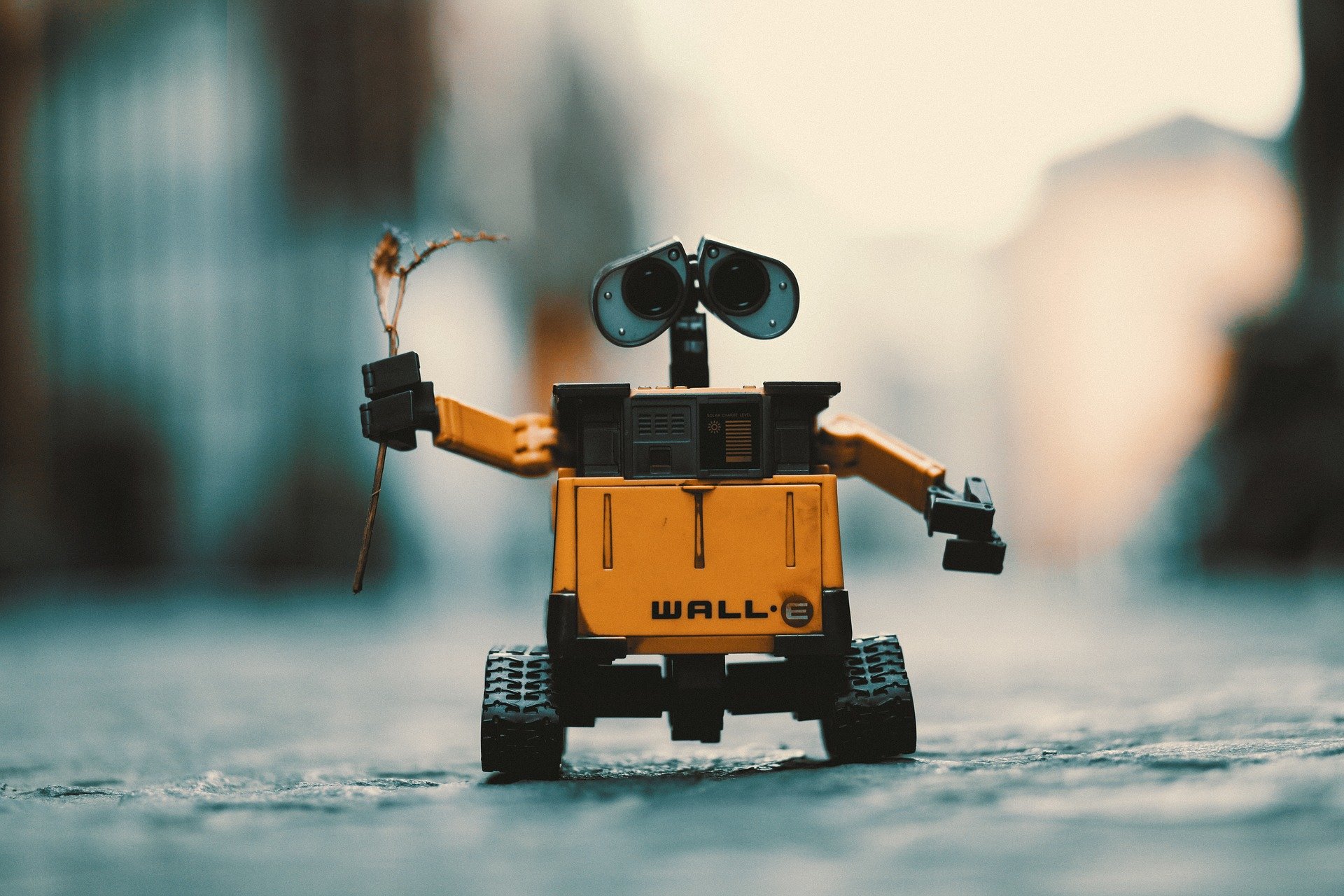
When it comes to navigating their surroundings, machines have a natural disadvantage compared to humans. To help hone the visual perception abilities they need to understand the world, researchers have developed a novel training dataset for improving spatial awareness in robots.
In new research, experiments showed that robots trained with this dataset, called RoboSpatial, outperformed those trained with baseline models at the same robotic task, demonstrating a complex understanding of both spatial relationships and physical object manipulation.
For humans, visual perception shapes how we interact with the environment, from recognizing different people to maintaining an awareness of our body’s movements and position. Despite previous attempts to imbue robots with these skills, efforts have fallen short as most are trained on data that lacks sophisticated spatial understanding.
Because deep spatial comprehension is necessary for intuitive interactions, if left unaddressed, these spatial reasoning challenges could hinder future AI systems’ ability to comprehend complex instructions and operate in dynamic environments, said Luke Song, lead author of the study and a current Ph.D. student in engineering at The Ohio State University.
“To have true general-purpose foundation models, a robot needs to understand the 3D world around it,” he said. “So spatial understanding is one of the most crucial capabilities for it.”
The study was recently given as an oral presentation at the Conference on Computer Vision and Pattern Recognition. The work is published in the journal 2025 IEEE/CVF Conference on Computer Vision and Pattern Recognition (CVPR).
To teach robots how to better interpret perspective, RoboSpatial includes more than a million real-world indoor and tabletop images, thousands of detailed 3D scans, and 3 million labels describing rich spatial information relevant to robotics. Using these vast resources, the framework pairs 2D egocentric images with full 3D scans of the same scene so the model learns to pinpoint objects using either flat-image recognition or 3D geometry.
According to the study, it’s a process that closely mimics visual cues in the real world.
For instance, while current training datasets might allow a robot to accurately describe a “bowl on the table,” the model would lack the ability to discern where on the table it actually is, where it should be placed to remain accessible, or how it might fit in with other objects. In contrast, RoboSpatial could rigorously test these spatial reasoning skills in practical robotic tasks, first by demonstrating object rearrangement and then by examining the models’ capacity to generalize to new spatial reasoning scenarios beyond their original training data.
“Not only does this mean improvements on individual actions like picking up and placing things, but also leads to robots interacting more naturally with humans,” said Song.
One of the systems the team tested this framework on was a Kinova Jaco robot, an assistive arm that helps people with disabilities connect with their environment.
During training, it was able to answer simple close-ended spatial questions like “Can the chair be placed in front of the table?” or “Is the mug to the left of the laptop?” correctly.
These promising results reveal that normalizing spatial context by improving robotic perception could lead to safer and more reliable AI systems, said Song.
While there are still many unanswered questions about AI development and training, the work concludes that RoboSpatial has the potential to serve as a foundation for broader applications in robotics, noting that more exciting spatial advancements will likely branch from it.
“I think we will see a lot of big improvements and cool capabilities for robots in the next five to ten years,” said Song.
Co-authors include Yu Su from Ohio State and Valts Blukis, Jonathan Tremblay, Stephen Tyree and Stan Birchfield from NVIDIA.
More information:
Chan Hee Song et al, RoboSpatial: Teaching Spatial Understanding to 2D and 3D Vision-Language Models for Robotics, 2025 IEEE/CVF Conference on Computer Vision and Pattern Recognition (CVPR) (2025). DOI: 10.1109/cvpr52734.2025.01470
Citation:
Robots trained with spatial dataset show improved object handling and awareness (2025, November 13)
retrieved 13 November 2025
from https://techxplore.com/news/2025-11-robots-spatial-dataset-awareness.html
This document is subject to copyright. Apart from any fair dealing for the purpose of private study or research, no
part may be reproduced without the written permission. The content is provided for information purposes only.
Tech
Jeffrey Epstein Claimed Intimate Knowledge of Donald Trump’s Views in Texts With Bill Gates Adviser

The next day, she sent Epstein a link to an article in Commentary about Trump’s election and the American economy. “Good article for trump to see,” she wrote.
On March 4, Melanie messaged Epstein. “Bg meets w trump march 20/21,” in apparent reference to Gates. (Gates did indeed meet with Trump at the White House on March 20, 2017. Sean Spicer, the White House press secretary, said the meeting was about combatting disease outbreaks around the world.)
“A waste of time,” replied Epstein. “he should meet with barrack,” in an apparent reference again to the current US ambassador to Turkey.
On March 6, Epstein and Melanie continued messaging about Trump and Gates.
“Israel – tell bill Paris week of 21,” Epstein wrote, in apparent reference to a supposed peace meeting regarding the situation in the Middle East.
“Peace mtg? W Jared and Tony Blair and all those folks? Not sure bg interested in peace process mostly technologies,” replied Melanie. “He says he speaks to Jared a lot”
“No peace boring and not happening. GROW UP,” Epstein replied.
(While there didn’t appear to be a peace meeting in Paris in March 2017, on March 10, days after these messages were sent, Trump had his first ever phone call with Palestinian leader Mahmoud Abbas and invited him to visit the White House.)
In their messages on March 6, Melanie reminded Epstein that the meeting was taking place between Gates and Trump later that month.
Epstein appeared to then claim a meeting was taking place at his house to discuss a myriad of issues related to Israel, including, he said in a message to Melanie, “Money surveillance, offense. It’s at my house so I would know.” It’s unclear if the meeting took place, or who attended if it did.
“Omg INVITE ME,” writes Melanie. “Can try to invite bg depending on guest list etc – Larry told him he couldn’t have contact w you so would have to manage that carefully.” (This is an apparent reference to Larry Cohen, Gates’ longtime associate. Cohen is the CEO of Gates Ventures and did not reply to a request seeking comment.)
“Not a problem for me,” writes Epstein. “I like bill . He gets more from me than I get from him. He should grow some balls and start to love.”
Tech
‘Energy sandwich’ could power next-generation solar and lighting

Researchers have achieved a new level of control over the atomic structure of a family of materials known as halide perovskites, creating a finely tuned “energy sandwich” that could transform how solar cells, LEDs and lasers are made.
Due to their remarkable ability to absorb and emit light, and because they are cheaper and can be configured to convert more of the solar spectrum into energy than silicon, perovskites have long been touted as a potential replacement for silicon in solar cells, LEDs and quantum technologies.
However, their instability and durability has, so far, largely limited perovskite devices to the laboratory. In addition, scientists have struggled to precisely control the thickness of perovskite films, and control how different perovskite layers interact when stacked together—an important step in building functional, multi-layered structures.
Breakthrough in perovskite film growth
Now, a team of researchers led by the University of Cambridge has found a new way to grow ultra-thin layers of perovskite films so their atoms line up perfectly, which could enable more powerful, durable and efficient devices.
The researchers used a vapor-based technique to grow three-dimensional and two-dimensional perovskites one layer at a time, which enabled them to control the thicknesses of the films down to fractions of an atom.
Their results, reported in the journal Science, could open the door to usable perovskite devices that can be produced at scale, using a process like that used to make commercial semiconductors.
Each layer in a semiconductor “sandwich” does a different job in moving electrons and their positively-charged counterparts—called holes—around and determines how the semiconductors absorb or emit light. Together, the layers act like one-way streets that guide the electric charges in opposite directions, preventing them from bumping back into each other and wasting energy as heat.
In other widely-used semiconductors, such as silicon or newer materials such as gallium nitride, the properties of the individual layers can be fine-tuned using various methods. But perovskites, despite their excellent performance, have so far proved difficult to control in layered devices, due in part to their ‘chaotic’ atomic structure.

Vapor processing enables atomic precision
“A lot of perovskite research uses solution processing, which is messy and hard to control,” Professor Sam Stranks from the Department of Chemical Engineering and Biotechnology, who co-led the research, said.
“By switching to vapor processing—the same method used for standard semiconductors—we can get that same degree of atomic control, but with materials that are much more forgiving.”
The researchers used a combination of three-dimensional and two-dimensional perovskites to create and control their atomically-tuned stacks, a phenomenon known as epitaxial growth. This fine control let the team directly observe how the light given off by the material changes depending on whether it’s a single layer, a double layer, or thicker.
“The hope was we could grow a perfect perovskite crystal where we change the chemical composition layer by layer, and that’s what we did,” said co-first author Dr. Yang Lu from Cambridge’s Department of Chemical Engineering and Biotechnology and Cavendish Laboratory.
“It’s like building a semiconductor from the ground up, one atomic layer after another, but with materials that are much easier and cheaper to process.”
Controlling charge behavior and device potential
The researchers also found they could engineer the junctions between the layers to control whether electrons and holes stayed together or apart—a key factor in how efficiently a material emits light.
“We’ve reached a level of tunability that wasn’t even on our radar when we started,” said Professor Sir Richard Friend from the Cavendish Laboratory, who co-led the research.
“We can now decide what kind of junction we want—one that holds charges together or one that pulls them apart—just by slightly changing the growth conditions.”
The researchers found they could tune the energy difference between the layers by more than half an electron volt, and in some cases, extend the lifetime of electrons and holes to over 10 microseconds: far longer than usual.
The team says this level of precision could pave the way for scalable, high-performance devices that use light in new ways, from lasers and detectors to next-generation quantum technologies.
“Changing the composition and performance of perovskites at will—and probing these changes—is a real achievement and reflects the amount of time and investment we’ve made here at Cambridge,” said Stranks.
“But more importantly, it shows how we can make working semiconductors from perovskites, which could one day revolutionize how we make cheap electronics and solar cells.”
More information:
Yang Lu et al, Layer-by-layer epitaxial growth of perovskite heterostructures with tunable band offsets, Science (2025). DOI: 10.1126/science.adx5685. www.science.org/doi/10.1126/science.adx5685
Citation:
‘Energy sandwich’ could power next-generation solar and lighting (2025, November 13)
retrieved 13 November 2025
from https://techxplore.com/news/2025-11-energy-sandwich-power-generation-solar.html
This document is subject to copyright. Apart from any fair dealing for the purpose of private study or research, no
part may be reproduced without the written permission. The content is provided for information purposes only.
-

 Sports1 week ago
Sports1 week agoPeat wows in debut as Arizona beats No. 3 Florida
-

 Entertainment6 days ago
Entertainment6 days agoChina unveils£5.4 bn Fujian, its most advanced aircraft carrier yet
-

 Business1 week ago
Business1 week agoGST rationalisation impact: Higher RBI dividend expected to offset revenue shortfall; CareEdge flags tax pressure – The Times of India
-

 Tech1 week ago
Tech1 week agoBlood Tests for Alzheimer’s Are Here
-

 Business1 week ago
Business1 week agoSetback for expatriates? Delhi HC upholds mandatory EPFO membership; what this means for foreign staff – The Times of India
-

 Fashion1 week ago
Fashion1 week agoBangladesh Bank allows foreign currency-taka swap facility for dealers
-

 Tech1 week ago
Tech1 week agoThe AI Data Center Boom Is Warping the US Economy
-

 Politics1 week ago
Politics1 week agoTrump links Republicans’ election setbacks to record US govt shutdown


